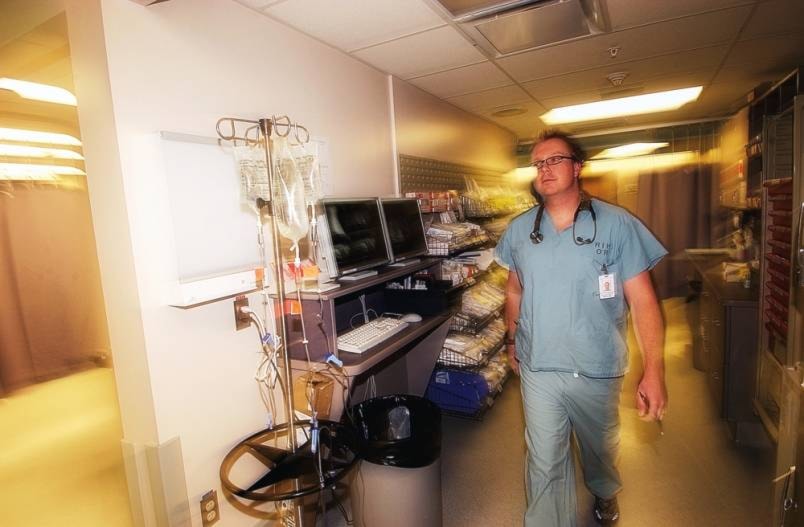Interior Health continues to grapple with retaining physicians in rural communities, the Thompson Regional Hospital District has heard.
Getting physicians to communities throughout IH’s large geographical region is not the problem. Getting them to stay is the dilemma.
“Retention of our primary-care providers in rural is something that we deal with every day,” Interior Health’s rural health director Bernie Easson told the board at its Thursday (Nov. 21) meeting. “Because we can’t be complacent.”
A rundown of physicians available in rural communities was provided.
Ashcroft has three physicians, Barriere has four physicians (two share one position and travel from Kamloops), Chase has three physicians and a nurse practitioner, Clinton has a primary-care nurse, Clearwater has four physicians, Lillooet has six physicians, Lytton has three physicians and Logan Lake has two physicians. Logan Lake, however, will lose its two physicians at the end of the year. Easson is hopeful a physician will be secured to start in the spring and a nurse practitioner will fill the gap between departure and arrival.
Speaking with KTW, Easson said Interior Health is constantly recruiting physicians in all areas, including fill-in doctors who can cover when a community’s doctor takes time off. She said efforts are made to showcase the areas, including providing accommodations. Some doctors live in Kamloops and travel to work in the region. IH supports that by offering good rotations, education and support from colleagues. Easson said, however, physician retention needs to be tackled not only IH, but also by communities that are at the table to address myriad rural health-care issues.
“If a community has no housing, how are we going to retain our people living in that community?” she said. “It’s a partnership. It’s between the community, people’s jobs, education and lifestyle. If you are looking at all of those things, factors that make people want to stay, that’s what we call retention.”
Other issues affecting rural health care include confusion when navigating services, not all of which are available in all communities.
TNRD Area J director Ronaye Elliott, whose electoral area includes, Cherry Creek, Tobiano, Savona and the area west of Kamloops, said winding through the system is “almost impossible.”
Eason said Interior Health is working on creating a co-ordinated, single point of entry.
“We envision a time where there will be one number that people will call if they need health-care services and at that number is a warm voice, warm person that is saying, ‘How can I help you and I’m going to link you with the right person,’ so people don’t have to go searching for that,” Bernie Easson said.
Other key areas being addressed by Interior Health are Aboriginal health and seniors. The region has more than two dozen First Nations and the board heard the population is aging and living longer, creating health-care challenges moving forward.
